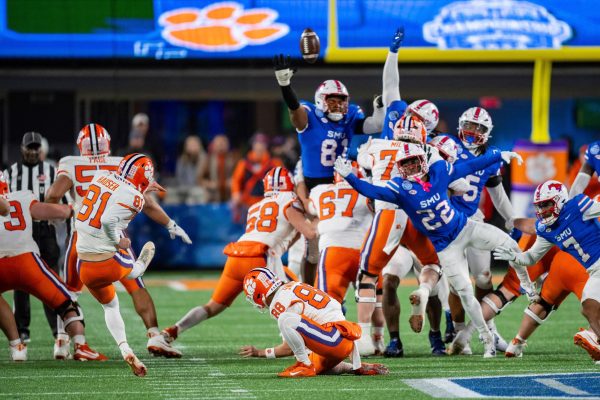Taking Vancouver: American Olympic Domination
In the 1990s, American Todd Lodwick, an Olympic athlete in the Nordic combined, had to wax his own skis before each competition. At the time, the honor of making the U.S. Olympic team was enough of a reward for Lodwick and his teammates who entered into the Olympics knowing that they were facing immense odds against dominant European competitors. Now, nothing short of winning is acceptable.
This year in Vancouver, Lodwick, already the owner of two world championships from 2009, was only .07 seconds from the podium. So what changed? How is it that in the Winter Olympics, which have traditionally been the playground for European athletes, the USA has a commanding lead in overall medals?
The first part of the answer is obvious: money; a lot of it. With monetary incentives to earn medals ($25,000 for gold, $15,000 for silver and $10,000 for bronze) and far more lucrative opportunities to score an endorsement deal, athletes have good reason to train hard. But these flashes of money cannot compare with the costs required to excel at many athletes’ sports and is nowhere near enough to support an Olympian financially while they commit full-time to training. Although the United States has been pouring money into training facilities and salaries for the best available coaches, this alone cannot propel a country’s athletes to greatness.
Consider Shaun White, the newly crowned winner of the Vancouver half-pipe and owner of the highest score ever received in the event (48.4 out of 50). Having been a championship snowboarder since adolescence and having amassed a small empire of endorsement deals, his job is winning. So that’s what he does. Every time he wins a medal, executives at Oakley, Burton and Target smile. But, while this example might explain the recent U.S. surge in gold medals in the men’s snowboarding half-pipe, it does little else.
Lodwick’s and White’s stories are not typical among American athletes because the majority of the 2010 Winter Olympic team wasn’t on the team in the 90’s and doesn’t earn nine million dollars a year. The reason why Europe was always competitive was that athletes lived, breathed and excelled at their sports from the time they were old enough to walk. Instead of grabbing a tennis racket or football for a fun Sunday afternoon, they grabbed their skis and hiked up the Pyrenees. The change in American team results has not been the few medals earned by localized celebrity athletes or new pockets of talent. It has been an overarching change in how the country approaches the Winter Games, and it all dates back to 1980 and the Miracle on Ice.
In that now legendary moment, the entire country came together and discovered that the Winter Olympics are really pretty cool and that winning at them is amazing. The Olympic Games became much more than just sport, and the Winter Olympics provided a shining new opportunity to expand American athletic dominance. But the effect was not immediate. It has taken until the turn of the 21st century for the necessary factors to combine and for America to assert itself as a dominant force in the Winter Olympics.
Since that magical day in 1980, more and more winter athletes have been achieving the superstardom of their summer sport counterparts. Names like Bode Miller, Lindsey Vonn, Apolo Anton Ohno, Shani Davis and Michelle Kwan have become renowned and their fame is an indicator of the widespread interest and support that has developed for winter sports. Seriously, the country has even begun learning the rules of curling (and maybe, just maybe, someday someone will actually watch a match).
As interest grew, so did the U.S. medal count. In 1992, the United States took home 15 medals for the first time in its Winter Olympic history. In the following years, however, the team would have a series of disappointing showings at the Games. Then, at the Salt Lake City Games in 2002, American athletes combined to take 34 medals, as the U.S. scored more bling than any other country for the first time since 1932. In Vancouver, as of Wednesday, the U.S. had captured 27 medals, leading Germany who has 24. On February 17th, the U.S. had its most successful Olympic day of all time, winning six medals.
The key to this surge of success was patience. A fresh crop of young athletes, inspired by the story of the 1980 Olympics and with the resources of a wealthy and supportive nation are now of age and ready to compete. Their results speak for themselves as to how well they have been doing just that.
So what can one take away from the rise of Americans in winter sports? To the aspiring Winter Olympian: take heart, the age of American dominance is only just beginning and there will be plenty of glory to go around in years to come. To the rest of us: get psyched. Finally we have an excuse to deprive ourselves of sleep and ignore our assignments once every four Februaries. After all, it is our patriotic duty to cheer on our team, right?





